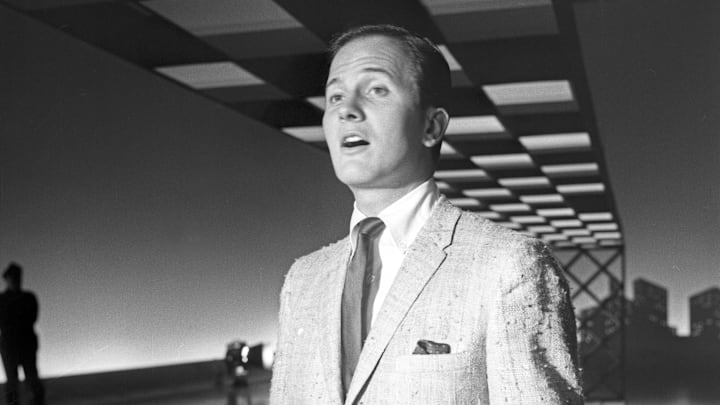2. “GO AWAY LITTLE GIRL” – Steve Lawrence (1963)
I have no problem with Donny Osmond’s version of this song, which went to number one the following decade. But this song – written by Carole King and Gerry Goffin, no less – is as drecky as they come. When Osmond did it, he was a kid and it comes off as a cute little teeny-bopper’s heartsick lament. Lawrence, singing as an adult man, may introduce an ick factor for some listeners, but that’s not what bothers me. I think the entire production – the tempo, the orchestration, and Lawrence’s singing – is atrocious.
Actually, the first two – tempo and orchestration – are merely mundane. It’s casual, generic music. But when Lawrence starts singing, I worry about his health. I suppose he is trying to convey just how emotionally devastated he is by having to say goodbye to the little girl in question. But he comes across as some sort of weird, lumbering dying moose.
And not even a scary, howling dying moose. This moose is dying of indigestion as near as I can tell. In other words, he doesn’t seem devastated – merely queasy. Like, if he really tried singing loud and proud, he might vomit. And it just never gets better. Even on the high part in the chorus, Lawrence remains subdued. Pretty soon, the requisite strings swallow up any momentum the song might have been managing. It’s a mediocre song given a very poor rendering.
1. “MOODY RIVER” – Pat Boone (1961)
I will withhold my personal feelings about Pat Boone and the special hell he occupies in music history. I will simply point out that this is one of the biggest disconnects between content and performance you will find in a popular song. It is one of those tragic songs about a man finding his lover has killed herself (in that moody river). He is recounting what I imagine is a fairly traumatic experience.
And he does it with all the feeling of a contract player singing a jingle for the local pie shop. There is actually nothing even remotely human in the performance. Nothing that touches on the emotion inherent in such a story. Nothing that could possibly disturb a listener.
But if you bother to listen, you will hear an inexplicable shift from first to third person when the body is discovered and things start to get serious. It’s as if Boone simply could not access the human empathy required to continue singing in first person so without warning or explanation, “I looked into the muddy water and what could I see” turns into “tears in his eyes and a prayer on his lips.” But that happy little piano motif continues uninterrupted, which I suppose is all that really matters.
